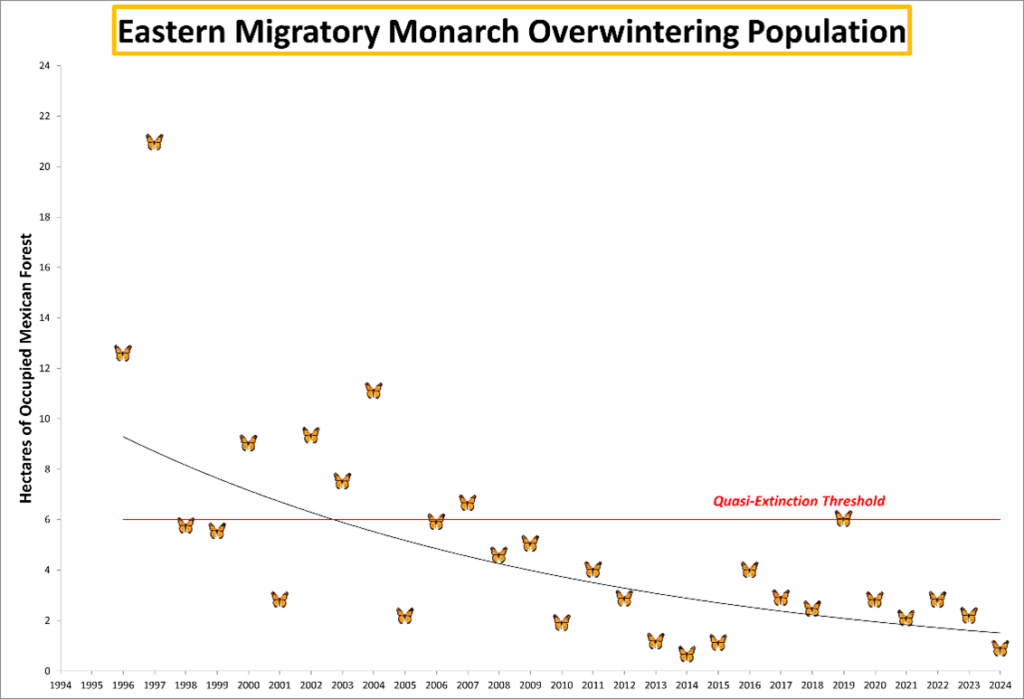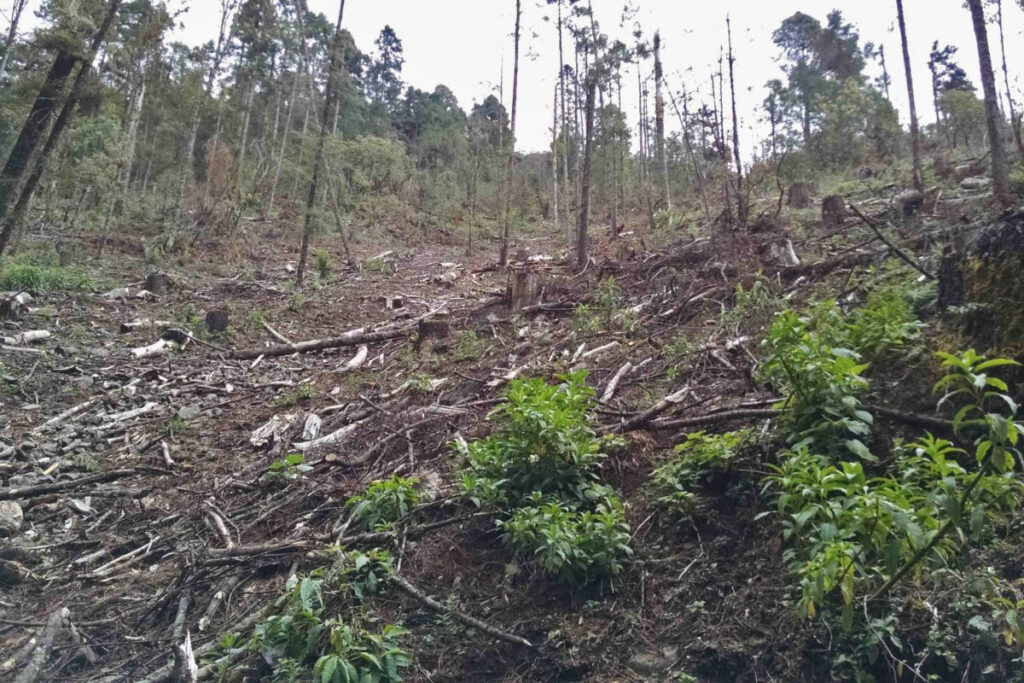The Center for Biological Diversity, along with over 20 other conservation organizations, has called on Congress to provide more than $100 million per year for the conservation of monarch butterflies to help stem their rapid population decline.
The latest annual count for the eastern monarch butterfly population was the second-lowest ever recorded. The population declined by nearly 60% from the previous year and is only 1/6 of the size needed to be out of the danger zone of migratory collapse. The western population of monarchs, which famously winters on the California coast each year, remains at just 5% of what it once was.

“More than America’s most beloved butterfly, the monarch is a symbol of wonder, transformation and resilience,” said Stephanie Kurose, deputy director of government affairs at the Center for Biological Diversity. “This may be Congress’ last chance to save monarchs before they become the face of the extinction crisis.”

The migration of monarch butterflies has been moving towards extinction because of landscape-scale threats from pesticides, development and habitat loss in the United States. The loss of overwintering habitat in Mexico is also an existential threat to the monarchs’ future. The oyamel fir stands where the eastern population of monarchs roost are threatened by illegal logging, land conversion for farming, and climate change.

Conservation organizations are asking that Congress to spend $100 million per year to restore 1 million acres of milkweed and pollinator habitat in the U.S. They also are asking Congress to increase funding for the U.S. Forest Service’s International Program to ramp up its efforts in Mexico to combat illegal logging and provide additional capacity for local communities to sustainably manage the monarchs’ overwintering habitat.

“The status quo of paltry funding and half-baked policies doesn’t work,” said Kurose. “If we let monarchs go extinct when we could have saved them, that’s a moral failure on our part.”

“With monarch butterflies now down 90 percent in the last 20 years, we simply must do more if we are going to be successful in reversing monarch butterfly decline. We must continue working together to help save the monarch butterfly and reverse the overall trend of declining wildlife populations in the United States.” Collin O’Mara, president and CEO of the National Wildlife Federation.

https://www.nwf.org/Home/Latest-News/Press-Releases/2018/03-07-18-Monarch-Decline
